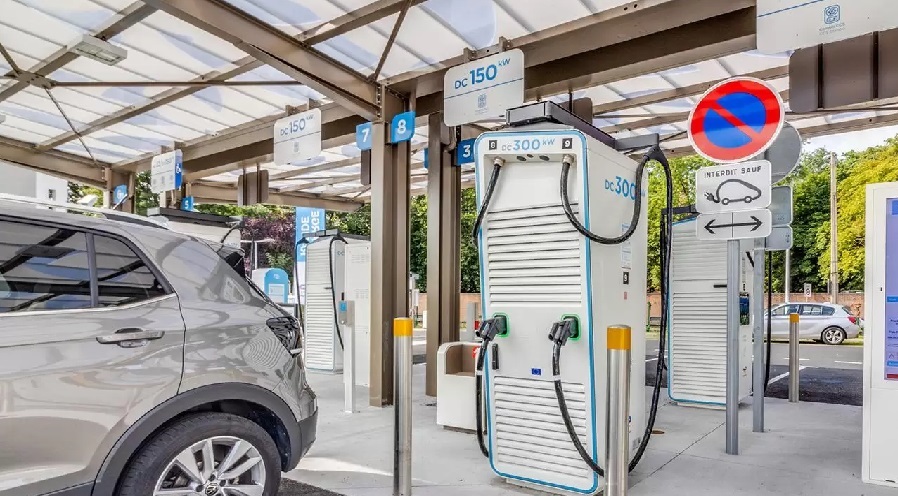According to a European Automobile Manufacturers’ Association (ACEA) analysis, with 119,255 devices, France holds the third place on the podium among the leading European countries in installed charging infrastructure on the continent.
However, according to the Avere-France barometer, as of April 30 2024 the nation would have 129,525 public charging points, representing a 30 per cent increase in their number in one year.
Moreover, with the signing of a new strategic contract between the automotive sector and the state, the aim is to reach 400,000 public charging points by 2030.
Additionally, there is a plan to install 25,000 charging devices of at least 50 kilowatts on major roads by 2027, of which currently nearly 19,000 rapid terminals have already been installed.
Is it possible for the French Republic to meet these objectives?
Clément Molizon, General Delegate of Avere-France, states that “the current deployment rate is consistent with this trajectory.“
He adds: “Beyond the numbers, let us remember that the true driving force behind these deployments should be to meet the needs of present and future users, both in quantity and quality.”
On his part, Luca Rossini, CEO and co-founder of Rossini Energy, revealed his opinion in a conversation with Mobility Portal Europe: “I am confident that the goals for 2030 will be achieved sooner or later.”
What are the reasons that have made France one of the best-equipped countries in the EU?
The deployment of this infrastructure is related to the fact that the state has implemented various assistance schemes to support its installation, both in private areas, such as homes, and in public areas, such as roads, parking lots, and highways.
To install a residential charging station, the French government introduced the Energy Saving Certificates Programme Advenir, which supports the establishment of individual or shared points, as well as collective infrastructure in buildings.
Furthermore, this programme introduced a tax credit that covers up to 75 per cent of the acquisition and installation costs of the equipment, with a maximum limit of 500 euros.
To further incentivise citizens, the VAT rate has been reduced to 5.5 per cent.
On the other hand, in support of public charging points, a subsidy plan was implemented, endowed with ten million euros, which supports investment projects in the implementation of accessible infrastructures in small independent service stations located in rural areas.
The mentioned project would extend until the end of June 2024.
Regarding the coverage rate of connection costs to the electricity network by TURPE, this could increase from 40 to 75 per cent for public stations located in service areas of motorways and highways, until the year 2025.
It is worth mentioning that the Ministry of Ecological Transition and Territorial Cohesion (METTC) informs that after mobilizing 320 million euros since 2016 for ADVENIR, the program receives additional funding to continue extending devices that will contribute to the 2030 target.
On another note, there are legislative and regulatory measures to establish requirements and remove obstacles to the deployment of charging stations.
For example, the Mobility Orientation Law has strengthened requirements for the pre-equipment of parking lots in new or renovated buildings, facilitating the subsequent installation of charging points.
What’s more, it mandates the equipping of non-residential building car parks with at least one charging point for every 20 spaces, starting from 2025.
On the other hand, the Climate and Resilience Law complements these provisions by imposing a similar obligation for car parks managed under a public service delegation or through a public market.
Regarding access to charging in collective buildings, both the Mobility Orientation Law and Decree 2020-1720 of 24 December 2020 have expanded and simplified the exercise of the right to install, allowing occupants of private parking spaces to equip them with a charging point.
Moreover, the Climate and Resilience Law considers the possibility of charging infrastructure operators (CPOs) or administrators of the public electricity distribution network to install collective electrical infrastructure at no cost to the owner or union of co-owners.
These provisions are governed by various regulatory texts detailed in specific decrees outlining the conditions and requirements.
On top of that, master plans for the development of publicly accessible charging infrastructure may benefit from specific financial assistance, including coverage of up to 75 percent of connection costs to the electricity distribution network until 2025.
To facilitate the implementation of these measures, a support guide has been developed under the leadership of the METTC.
Read more: Top 10: Which CPOs offer the most affordable rates in France?








